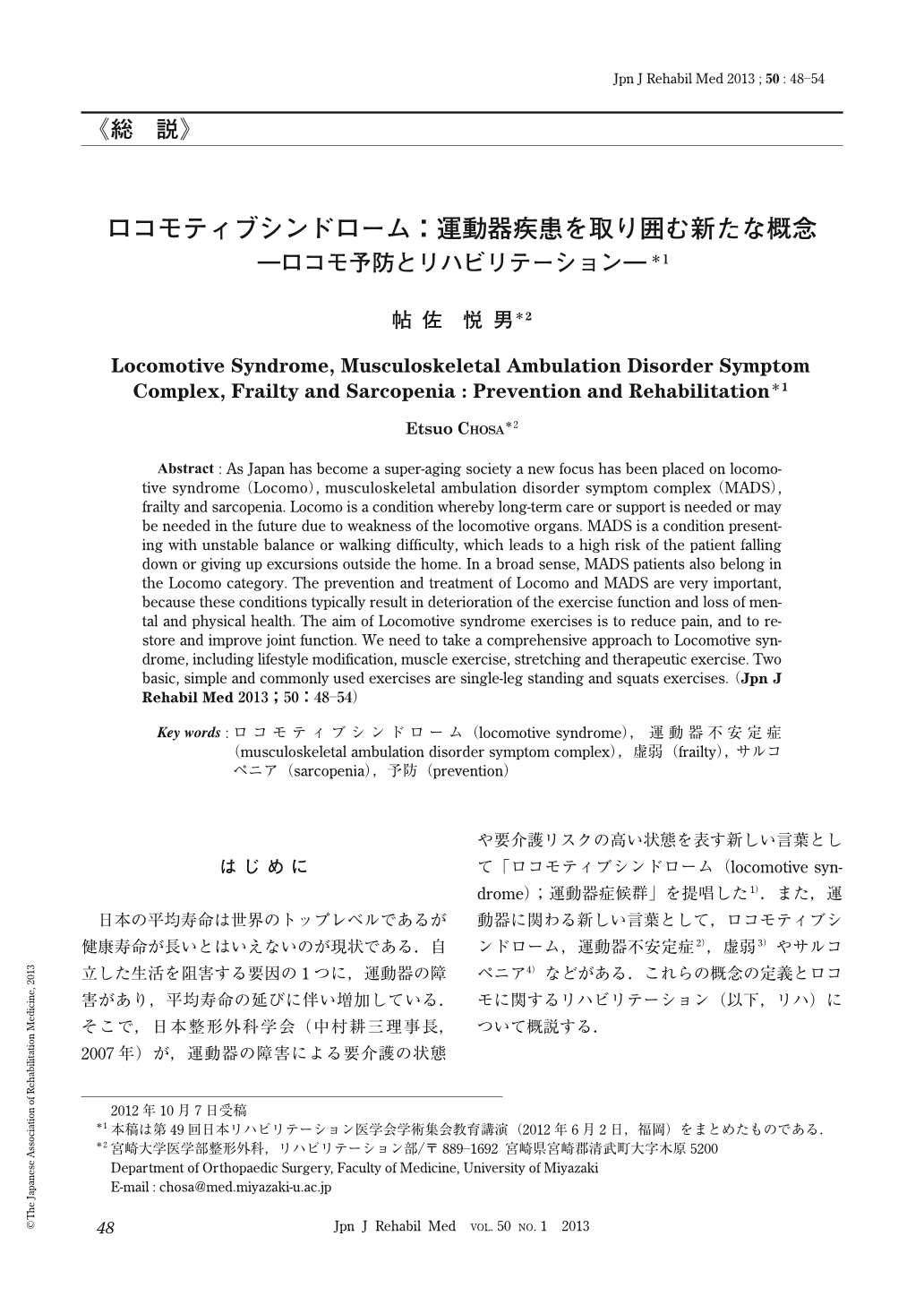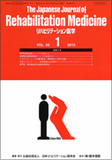Japanese
English
- 販売していません
- Abstract 文献概要
- 1ページ目 Look Inside
- 参考文献 Reference
はじめに
日本の平均寿命は世界のトップレベルであるが健康寿命が長いとはいえないのが現状である.自立した生活を阻害する要因の1つに,運動器の障害があり,平均寿命の延びに伴い増加している.そこで,日本整形外科学会(中村耕三理事長,2007年)が,運動器の障害による要介護の状態や要介護リスクの高い状態を表す新しい言葉として「ロコモティブシンドローム(locomotive syndrome);運動器症候群」を提唱した1).また,運動器に関わる新しい言葉として,ロコモティブシンドローム,運動器不安定症2),虚弱3)やサルコペニア4)などがある.これらの概念の定義とロコモに関するリハビリテーション(以下,リハ)について概説する.
Abstract : As Japan has become a super-aging society a new focus has been placed on locomotive syndrome (Locomo), musculoskeletal ambulation disorder symptom complex (MADS), frailty and sarcopenia. Locomo is a condition whereby long-term care or support is needed or may be needed in the future due to weakness of the locomotive organs. MADS is a condition presenting with unstable balance or walking difficulty, which leads to a high risk of the patient falling down or giving up excursions outside the home. In a broad sense, MADS patients also belong in the Locomo category. The prevention and treatment of Locomo and MADS are very important, because these conditions typically result in deterioration of the exercise function and loss of mental and physical health. The aim of Locomotive syndrome exercises is to reduce pain, and to restore and improve joint function. We need to take a comprehensive approach to Locomotive syndrome, including lifestyle modification, muscle exercise, stretching and therapeutic exercise. Two basic, simple and commonly used exercises are single-leg standing and squats exercises.

Copyright © 2013, The Japanese Association of Rehabilitation Medicine. All rights reserved.


